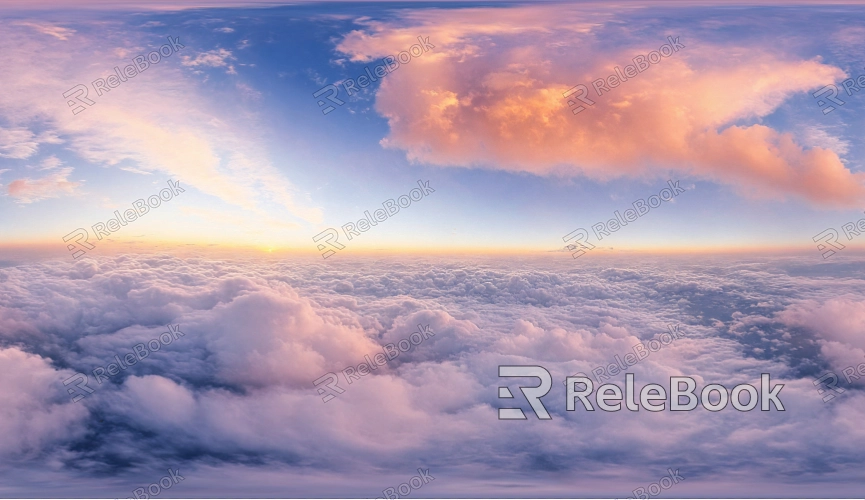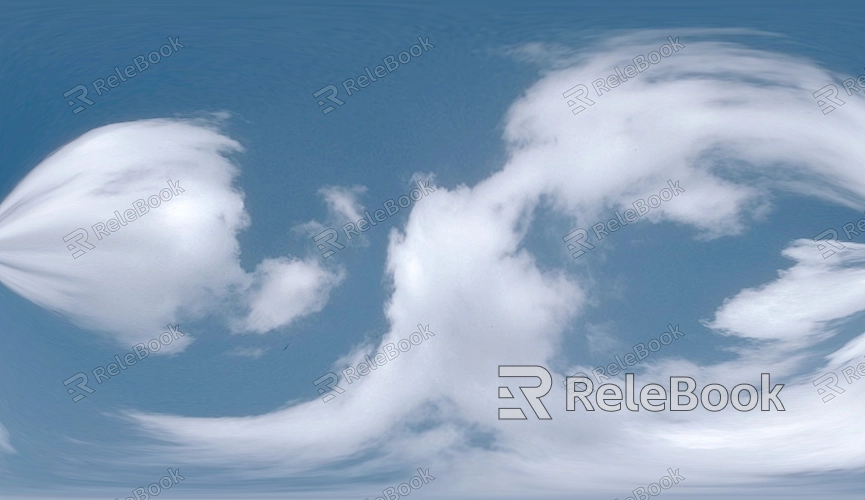What is the Best Sky Texture HDR for 3D Rendering
Sky texture HDRs bring a more realistic lighting effect and atmosphere to scenes. They are essential for creating outdoor environments, architectural visualizations, or product displays. Choosing the right sky texture HDR can greatly enhance the quality of your renders. In this article, we will dive into which sky texture HDR is best for 3D rendering and how to select the right one based on different needs and software.

1.HDRs That Match Your Project Type
Different 3D projects require different types of HDR textures to achieve optimal results. Designers should select the appropriate sky texture HDR according to the project’s nature.
Outdoor Environments: Sunlight HDRs are ideal for outdoor scenes, capturing the natural light of the sky. HDRs representing sunrise, noon, or sunset can simulate the lighting at various times of the day.
Architectural Visualization: In architectural renders, HDR images not only provide the right lighting but can also simulate surrounding environments, like urban settings or natural landscapes, helping to create a more realistic result.
Product Displays: For showcasing products, neutral sky textures, such as a clear sky or overcast day, allow the product to stand out as the focal point without being overpowered by intense lighting.
2.HDR Resolution and Detail
The resolution of an HDR image significantly impacts the sharpness and clarity of the rendering. High-resolution sky texture HDRs bring more refined lighting and environmental reflections.
Advantages of High-Resolution HDRs: Using 16K or 32K resolution HDR images can provide more precise reflections, refractions, and light projections. Especially in close-up renders, higher resolutions reduce blurriness and enhance detail.
Applications of Lower-Resolution HDRs: In less demanding scenes, HDR images with an 8K resolution or lower can suffice. They consume fewer resources and are ideal for quick renders or the initial stages of a design.
3.Lighting Temperature in HDRs
The color temperature of a sky texture HDR is another crucial factor. Different temperatures help create distinct atmospheres and lighting effects.
Cool-Toned HDRs: For technological, industrial, or modern settings, cool-toned HDRs, such as cloudy or overcast skies, can provide a sleek and professional ambiance.
Warm-Toned HDRs: Warm-toned HDRs, like those during sunsets or early mornings, are great for rendering cozy, natural environments, adding a sense of warmth and comfort to the scene.
4.Camera Angles and Composition
The angle and composition of the HDR sky also play a direct role in the final rendering. Sky texture HDRs from different perspectives affect the direction of light and environmental reflections.
Panoramic Sky HDRs: For panoramic renders or large architectural scenes, choosing a 360-degree panoramic HDR ensures light comes from all directions, providing even environmental illumination.
Partial Sky HDRs: Sometimes, using partial sky HDRs—featuring only the sky and some clouds—works better for specific lighting angles. These are suitable for smaller or more focused renders.

5.Using Dynamic HDRs
Dynamic HDRs, such as time-lapse sequences of the same scene, offer designers greater creative flexibility, especially for projects needing to depict lighting transitions or animations.
Simulating Time Changes: Designers can use HDR images from different times of the day to mimic changing lighting conditions, adding more realism. For instance, you can showcase how shadows and light evolve from sunrise to sunset.
Lighting in Animated Scenes: In animation or film production, dynamic HDRs can improve immersion, allowing designers to demonstrate smoother light transitions throughout the scene.
6.Software Compatibility and Resources
Various 3D software programs support different HDR file types and loading methods. Designers should select HDR resources compatible with their software platforms.
Blender: Blender allows direct loading of HDR files for environment lighting. Designers can adjust the lighting through Blender's Node Editor for more precise control.
3ds Max: When used with V-Ray or Arnold renderers, 3ds Max offers flexible options to fine-tune lighting intensity, exposure, and other details.
Cinema 4D: Cinema 4D supports plugins like HDRI Studio Rig, which allows quick and easy adjustments to HDR lighting setups.
7.Where to Find Sky Texture HDRs
When choosing the right sky texture HDR, it’s important to consider the quality and diversity of resources. Many websites offer high-quality sky HDRs. If you find it difficult or time-consuming to locate high-quality sky texture HDRs or don’t know how to create them, you can visit Relebook to download stunning HDR textures from https://textures.relebook.com.
8.Adjusting HDRs to Meet Project Needs
In practice, designers often need to adjust HDR files according to the project’s specific needs. For example:
Exposure Control: By adjusting the exposure settings of an HDR, designers can manage the intensity of the lighting in the scene.
Rotation and Positioning: For static scenes, rotating the HDR image can change the direction of light, ensuring that key areas receive the right illumination.
Selecting the right sky texture HDR can significantly enhance the visual quality of a 3D render while saving designers valuable time on lighting adjustments. By understanding the importance of HDR resolution, color temperature, camera angles, and software compatibility, designers can more efficiently achieve their project goals. Whether working on architectural visualization, product displays, or outdoor scenes, the right sky texture HDR can truly make a difference. If you’re looking for high-quality HDR images, 3D textures, or SketchUp or 3ds Max models to bring your virtual scenes to life, Relebook offers an extensive range of resources to help you achieve exceptional results in your projects.

